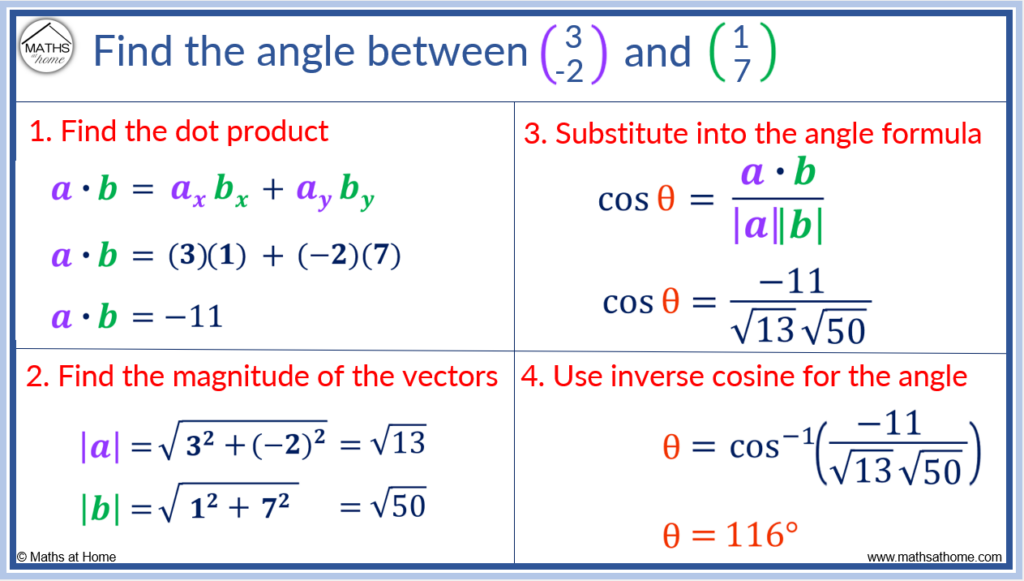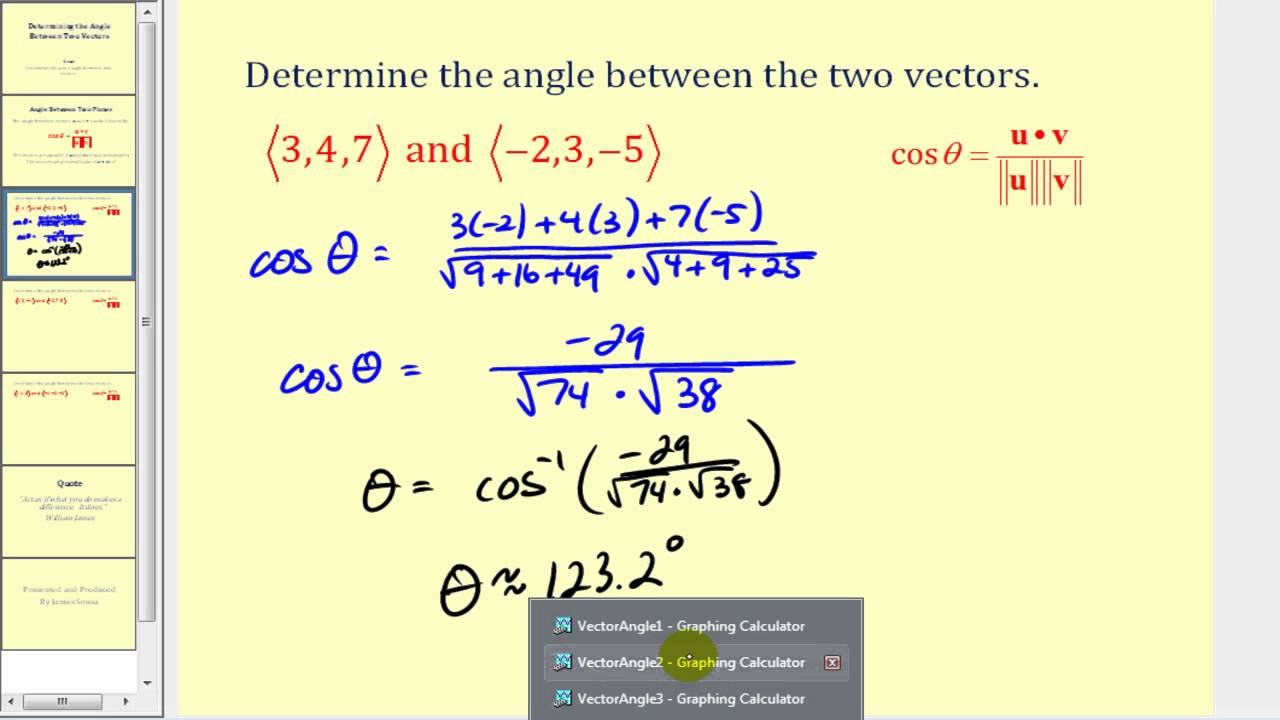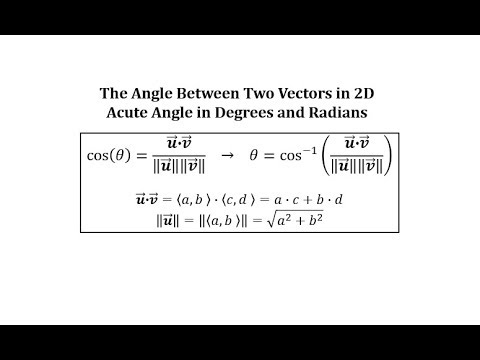Smart Ways to Find the Angle Between Two Vectors
Understanding the angle between vectors is crucial in many fields, from physics to computer graphics. In 2025, innovative methods for finding the angle between two vectors will make this calculation more accessible and precise. In this article, we’ll explore various methods for calculating angles, including the dot product, geometric interpretations, and utilizing trigonometric functions.
Understanding Vector Mathematics
Before we dive into specific techniques for angle measurement, it’s essential to understand the foundational concepts of vector mathematics. Vectors represent quantities that have both magnitude and direction in two-dimensional and three-dimensional vectors. In mathematical terms, a vector can be denoted as v = (x, y) in 2D or w = (x, y, z) in 3D. The ability to visualize vectors in these coordinate systems allows for effective analysis of their interactions, particularly angles.
The Dot Product and Angle Calculation
One of the primary methods to determine the angle between vectors is the dot product formula. Given two vectors A and B, the dot product is calculated as: A • B = |A| |B| cos(θ), where |A| and |B| are the magnitudes of the vectors and θ is the angle between them. This formula elegantly relates the geometric properties of vectors to trigonometric functions. By rearranging this equation, we can derive the angle measurement using the inverse cosine function: θ = cos-1((A • B) / (|A| |B|)). Thus, calculating the angle involves first determining the dot product and the magnitudes of the vectors.
Geometric Interpretation of Angles
Another powerful way to understand the angle calculation is through geometric interpretation. By visualizing vectors in the unit circle and employing the cosine theorem, one can accurately derive angles. In a graphic representation, the angle between two vectors can be observed by positioning them tail-to-tail or head-to-head within the coordinate system. This geometric visualization not only aids in measuring the acute and obtuse angles but also enhances comprehension of their orientation relative to each other.
Vector Projections and Angle Analysis
Vector projections can significantly contribute to angle estimation. By projecting vector A onto vector B, you can visualize how much of one vector resides along the other’s direction. The formula for projection is given as: projB(A) = ((A • B) / (|B|2))B. This allows researchers to determine the components of a vector in another’s direction, facilitating not just angle finding but also practical applications in vector analysis in various domains, such as physics and engineering.
Trigonometric Functions in Vector Measurement
Trigonometric functions play a crucial role in the angle measurement processes of vector mathematics. These functions, including sine and cosine, can formulate relationships and properties essential for determining angles. For angles in radians and degrees, understanding the properties of these functions is vital for conversions and calculations alongside the vectors.
Using Unit Vectors for Calculation
When calculating angles, transforming vectors into unit vectors can yield significant benefits. A unit vector, which has a magnitude of 1, simplifies the angle determination process. By normalizing vector A and vector B to units, we can focus on the angle relationships without the complicating factors of their original magnitudes: uA = A / |A| and uB = B / |B|. Consequently, the angle can be recalculated purely from the dot products of the unit vectors, maintaining consistent accuracy.
Angle Relationships in Spatial Vectors
Exploring angle relationships in spatial vectors extends the understanding of vectors in three-dimensional space. Recognizing angles formed between multiple vectors or within scalar fields can elucidate complex behaviors in physics and engineering applications. Vectors being orthogonal presents a unique scenario where the angle measurement is always 90 degrees, while acute angles signify positive correlations, with obtuse angles indicating negative interactions. This spatial reasoning is crucial for visualizing and analyzing multidimensional data.
Applications of Angles in Physics
Angles have profound implications in physics, especially when analyzing forces, movements, and fields. For example, understanding the vector representation of forces requires an accurate angle measurement to develop robust models for motion and interaction. Applications in vector dimensions are also critical for resolving issues in mechanics, electromagnetics, and fluid dynamics—demonstrating that grasping vector relationships and their angles significantly influences the clarity of physical law representations.
Vector Operations and their Significance
Understanding how vector operations—such as addition, subtraction, and scalar multiplication—affect angles is vital for comprehensive vector analysis. Every operation on vectors can introduce changes in their magnitudes and angles, affecting the outcomes of angle-related computations.
Cross Product and Its Angular Relationships
The cross product provides another approach to analyzing angles between vectors. The magnitude of the cross product of vectors A and B is given by: |A x B| = |A| |B| sin(θ). This relationship allows a different perspective on angle calculations, particularly when determining orthogonality or evaluating the area of parallelograms formed by vectors. Expect that acute intersections will yield a positive area, while obtuse angles will yield negative products, affecting the overall interpretation of angle relationships.
Understanding Angle Functions in Linear Algebra
Another critical area for angle finding lies within linear algebra, where notions such as vector spaces, angularity, and transformations are explored. Techniques that employ determinants and geometry enable effective angle estimation in coordinate transformations. Mastering this knowledge not only reinforces core principles of computing angles but also merges theoretical applications with practical computational techniques.
Visualization Techniques for Angles in Vectors
Visualizing vectors and their angles aids immensely in comprehensively understanding their relationships. Graphical representations can clarify relationships between angles in changes of states or transformations within data sets. Encouraging learners to employ tools—such as geometry software or drawing applications—allows a practical approach to engage deeply with data and permutations while discovering vectors’ finite and infinite behaviors.
Key Takeaways
- Understand foundational concepts of vector mathematics for accurate angle calculations.
- Use the dot product for precise measurement of angles between vectors.
- Gain insights from geometric interpretations and >vector projections to estimate angles effectively.
- Leverage trigonometric functions to enhance computation accuracy for angles.
- Incorporate visual tools to aid in delivering a comprehensive understanding of angle relationships.
FAQ
1. What are the most common methods for finding the angle between two vectors?
The most common methods for finding the angle between two vectors include using the dot product method and geometric interpretations. The dot product provides a direct mathematical relationship, while geometric interpretations focus on visualizing the vectors in a coordinate system to understand their orientation and resulting angle better.
2. How does the cosine theorem relate to angle measurement in vectors?
The cosine theorem states that in any triangle, the square of one side’s length is equal to the sum of the squares of the other two sides’ lengths minus twice the product of these sides and the cosine of the included angle. For vectors, this theorem helps determine angles by establishing a connection between the magnitudes of the vectors aligned at a common vertex.
3. Why are unit vectors important in angle calculation?
Unit vectors simplify the process of angle calculation as they standardize the magnitudes to one. This normalization allows for a straightforward application of the dot product and facilitates clarity when calculating angles without the interference of length variations between the original vectors.
4. What applications utilize angle measurement between vectors?
Angle measurement between vectors is crucial in various applications, particularly in physics for analyzing forces and motions, computer graphics for rendering images using vector representations, and machine learning to compute vector embeddings that optimize predictions based on angular distances.
5. Can angles between vectors be acute or obtuse, and how does this affect calculations?
Yes, angles between vectors can be acute, obtuse, or right angles. Acute angles correlate with positive dot product values, whereas obtuse angles result in negative values. This distinction plays a significant role in multiple disciplines, informing changes in calculations and interpretations based on the vectors’ orientation and interaction.


